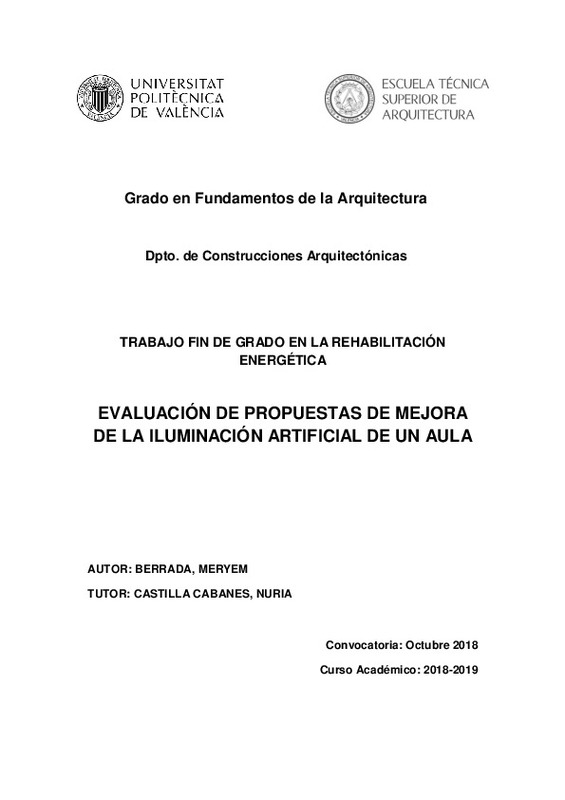|
Resumen:
|
El objetivo de este proyecto es la elaboración de unas propuestas de mejora del diseño de la iluminación artificial de un aula de la Escuela Técnica Superior de Arquitectura de la Universidad Politécnica de Valencia, ...[+]
El objetivo de este proyecto es la elaboración de unas propuestas de mejora del diseño de la iluminación artificial de un aula de la Escuela Técnica Superior de Arquitectura de la Universidad Politécnica de Valencia, garantizando una alta eficiencia energética.
Inicialmente, se analiza el estado de la iluminación artificial existente en el aula mediante un software específico en iluminación, el programa DIALux evo, obteniendo así, toda la información sobre su rendimiento visual y energético.
Partiendo del análisis de los resultados del estado actual, se propone un par de propuestas de mejora de la iluminación introduciendo cambios que mejoren su eficiencia energética.
En la primera propuesta, se apuesta por un renovado de los componentes del alumbrado, manteniendo el mismo diseño interior del aula, lo que permite reducir inmediata y significativamente el consumo energético de la iluminación.
La segunda propuesta supone una renovación integral del diseño interior del aula, teniendo en consideración los nuevos métodos de enseñanza y el avance tecnológico, junto con una adecuada elección de los materiales y componentes de la instalación del alumbrado. Así, de una parte, la flexibilidad del espacio docente, y la alta calidad de iluminación aseguran un rendimiento académico eficiente, y de otra parte, una reducción importante del consumo energético del alumbrado se garantiza mediante la elección de lámparas y luminarias eficientes.
[-]
The aim of this project is to study the artificial lighting of a classroom at the Architecture school at Polytechnics University of Valencia. Therefore, to make proposals to improve the design of interior lighting, in order ...[+]
The aim of this project is to study the artificial lighting of a classroom at the Architecture school at Polytechnics University of Valencia. Therefore, to make proposals to improve the design of interior lighting, in order to ensure high-energy efficiency. First, the current state of the classroom lighting will be designed using specific lighting software, DIALux evo, thus obtaining all the information on its visual and energy performance. After the simulation, the results obtained will be analyzed, and then based on the outputs; a couple of options are proposed to improve the lighting design by introducing changes to optimize its energy efficiency. The first suggestion requests a renewal of the lighting components, maintaining the same interior design of the classroom, which allows reducing immediately the energy consumption of the lighting. The second option involves a complete renovation of the classroom¿s interior design, taking into consideration new teaching methods and technological progress, together with an adequate choice of the materials and efficient lighting components. Thus, on the one hand, the flexibility of the space and the high quality of lighting contribute to the improvement of learning; on the other hand, a significant diminution in the energy consumption of lighting is guaranteed by the choice of efficient lamps and luminaires.
[-]
|







